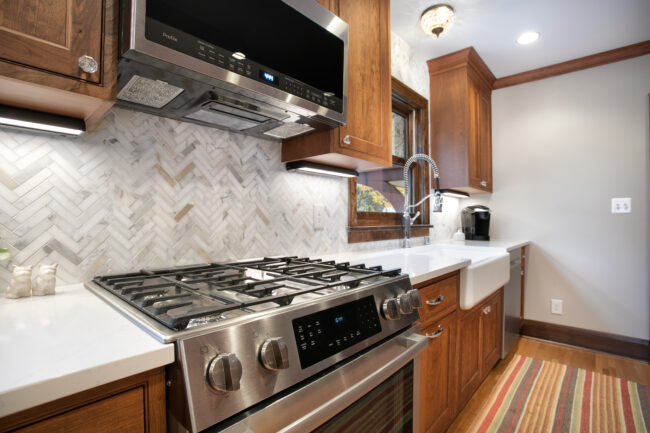This or That? How to Make the Best Home Renovation Choices for Your Home

A home renovation project is an exciting endeavor. You’re working toward getting the dream home you’ve always envisioned. One of the most important parts of renovating your home is selecting the right materials.
Whether you’re revamping your kitchen, bathroom or outdoor space, your building materials can make or break your renovation project. When selecting materials, there are several factors to consider. Whether you choose this or that depends on your lifestyle, budget, and more. Here’s a guide to choosing materials for your renovation.
Factors to Consider
Before choosing materials for your home improvement project, here are some factors you need to consider.
Budget
The most essential factor is the cost of the materials. Budgeting is often the hardest and most crucial part of planning any project. When selecting materials, make sure to stay within your budget.
You should also look closely at the materials to see if they are worth their price or if you can find the same quality materials for less.
Availability
Another aspect you need to consider is the availability of the materials. You might want a certain type of flooring, but if it isn’t available near you, you’ll have to pay more in shipping. When looking for materials, don’t just look online. Go to physical stores and suppliers near you to see what you can work with.
Lifestyle
Some materials are built for aesthetics but aren’t as durable. Meanwhile, some may have simpler charm but are great for heavy-duty use. When selecting materials, think about your lifestyle. Do you have a large family? Do you like to host? Choose materials that will best fit how you live.
You should also consider upkeep. If you’re a busy person, you should select low-maintenance materials that are easier to clean.
Aesthetic
When choosing materials, you should consider your overall home aesthetic. Although some might want an eclectic style, having design harmony in your home is still important. For instance, if your design theme is vintage, using chrome materials for your home wouldn’t make sense. If your home is sleek and modern, brick siding is probably not the best choice.
Climate
Climate is a vital factor when choosing materials for your home. Some materials are better insulators and can withstand more extreme temperatures. You should consider how hot the summers get and how cold the winters can go. You should also consider moisture. Do you live in a humid place? Does it rain often?
Sustainability
Some people consider the environment when choosing materials for their homes. Nowadays, people increasingly want to be sustainable. Being environmentally conscious encompasses everything from selecting groceries to picking kitchen tiles.
If you want to live more sustainably, consider factoring eco-friendliness into your home makeover plans. If you’re worried about the cost, sustainable materials go only up to 2% more expensive and can save you money in the long run.
This or That: How to Choose Materials
Ready to choose materials for your renovation? Here are some of the most common materials used for parts of the home.
Siding
Your siding encases and protects your house, but it also determines its exterior design and general curb appeal. When choosing a siding material, you must consider the aesthetics, durability, weather and fire resistance, among others.
- Vinyl: Vinyl is one of the most popular types of siding in the U.S. It’s made from polyvinyl chloride or PVC plastic, which is water and fire-resistant. It’s an economical choice of siding and has a lot of styles to choose from. However, it can be susceptible to sun damage and harsher weather conditions.
- Wood: Wood is a classic siding and can come in various styles. It is a more sustainable option and can be great for those who want to achieve a particular aesthetic for their house. However, wood is prone to fires and can be less durable than other options.
- Metal: Metal siding is highly durable and can withstand different weather conditions. It’s also low-maintenance and fire-resistant. However, it is not soundproof at all. It also isn’t a very good insulator, so it might not be great for places with extreme temperatures.
- Fiber Cement: Fiber cement siding is highly durable and long-lasting. It can withstand extreme temperatures and doesn’t require a lot of maintenance. You’ll have plenty of styles to choose from, which is great if you want to achieve a certain exterior look for your home. However, it can be expensive to install.
- Brick: Brick has a timeless, warm look that many love. It’s durable and doesn’t need constant maintenance. It is also fire and weather-resistant. Its remarkable qualities help increase the home’s value. Additionally, around 60% of buyers prefer brick, so your house will sell faster should you decide to put it on the market. However, brick can be expensive to install. It is also limited in style and color options.
Flooring
Flooring is one of the most important aspects of interior design. It’s equally a functional and an aesthetic decision, so you must consider many factors. Flooring is also an expensive remodel, so choosing the right material is crucial.
- Hardwood: Hardwood is one of the top choices in flooring. Hardwood can be expensive, but it increases the value of your home due to its quality and longevity. It’s easy to clean and doesn’t get too cold in the winter. However, they’re not very good in humid and rainy places.
- Laminate: Laminate is a more cost-effective flooring choice. It’s inexpensive and scratch-resistant, and it’s easy to install, too. However, it’s not as durable or long-lasting as hardwood.
- Vinyl: Vinyl is an excellent choice for areas and homes prone to moisture. They’re durable, water-resistant and easy to maintain and clean. However, they can be expensive as opposed to laminate.
- Tiles: Tiles are usually installed in kitchens and bathrooms, but some homeowners use tiles for the rest of the house. They’re waterproof, durable and long-lasting. There are tons of designs and finishes to choose from, too. However, they can get expensive and can be challenging to install. They can also get cold during winter.
- Carpet: Carpet is soft and cozy, making it an understandable favorite among many. It’s great for places that get really cold as they protect your feet from chilly floors. Plenty of designs are available, and they’re great for soundproofing, too. However, they can be tough to clean and maintain. They’re also not suitable for those with respiratory issues.
Countertops
There’s a lot of activity that goes on in the kitchen. Depending on how much you cook, you must decide on a working surface that suits your needs best. Countertops are not only functional but can also determine the whole look of your kitchen.
- Granite: Granite is a popular choice for kitchen countertops. It’s heat and scratch-resistant, and it’s quite a durable material. It comes in many designs and patterns, so you have plenty to choose from. However, granite needs to be regularly sealed since it is porous. Granite is also heavy and can be difficult to install.
- Acrylic: Acrylic countertops are a composite of resin and mineral components. They’re highly customizable and have no visible seams. They’re aesthetically pleasing and require less maintenance. They’re also non-porous and are less susceptible to stains. However, they are not heat-resistant and can easily scratch or dent.
- Quartz: Quartz or engineered stone is a composite of quartz particles and other materials. It’s easy to clean and maintain and is resistant to mold and mildew. Unlike natural stones like marble and granite, quartz does not need to be sealed regularly. However, quartz is not heat-resistant. It has plenty of color options, but they can fade when your countertops are exposed to direct sunlight.
- Marble: Marble is a classic choice. Price-wise, it’s on the higher end, but many people still go for its beautiful veined look. It’s sturdy, heat resistant, and can last decades with proper care. However, marble is porous and very prone to staining and scratching. You will need to maintain and seal it regularly.
- Butcher Block: Butcher block is a trendy choice right now. People love its warm look paired with a farmhouse sink. It’s one of the more affordable materials for countertops and is quite versatile. However, it’s a sensitive countertop — it can easily scratch and stain. It’s also not heat or water-resistant. However, proper care and maintenance can last you decades.
Making Informed Renovating Decisions
Renovations are exciting, but they are neither simple nor easy. You have to make so many decisions, and you need to make things work with your budget. When selecting materials for your siding, flooring or any part of your home, consider your wants, needs and

